
Expect the Extraordinary Sibelius’s Second Symphony MARCH 21 –23, 2024 23 24

THE CLEVELAND ORCHESTRA’S DIGITAL STREAMING SERVICE & APP
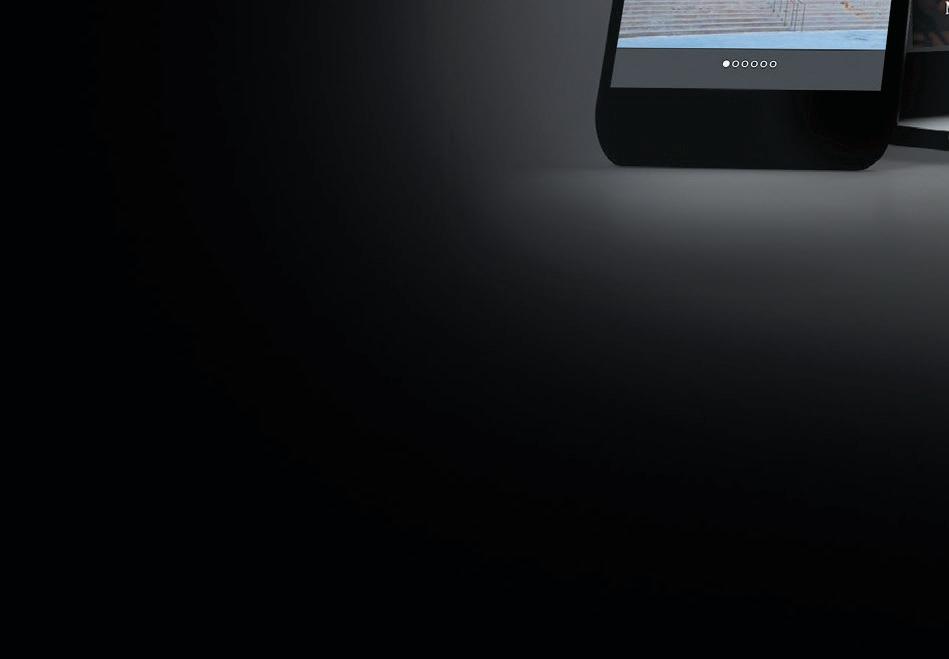
Experience The Cleveland Orchestra’s digital platform with new & improved features.

NEW Concert Experiences
Experience on-demand concerts with exclusive interviews and behind-the-scenes features!
Now available: Ravel’s Piano Concerto in G major featuring Víkingur Ólafsson.
NEW Livestreamed Concerts
Enjoy six concerts broadcast live from Severance throughout the 2023 – 24 season.
COMING SOON
Archival Audio Recordings
By popular demand, stream exclusive recordings from The Cleveland Orchestra’s audio archives.
NEW Educational Content
Access videos and learning resources for children, students, and teachers. Visit stream.adella.live/premium or scan the QR code to secure your subscription today!

Questions? Email adellahelp@clevelandorchestra.com or call 216-231-7300
2023/2024 SEASON
JACK, JOSEPH AND MORTON MANDEL CONCERT HALL AT SEVERANCE MUSIC CENTER
Sibelius’s Second Symphony
Thursday, March 21, 2024, at 7:30 PM
Friday, March 22, 2024, at 7:30 PM
Saturday, March 23, 2024, at 8 PM
Dalia Stasevska, conductor
Einojuhani Rautavaara (1928–2016)
Julia Perry (1924–1979)
Cantus Arcticus 20 minutes
Concerto for Birds and Orchestra
I. The Bog
II. Melancholy
III. Swans Migrating
Stabat Mater
Josefina Maldonado, mezzo-soprano
INTERMISSION
Jean Sibelius (1865–1957)
minutes
minutes
Symphony No. 2 in D major, Op. 43 45 minutes
I. Allegretto
II. Andante, ma rubato
III. Vivacissimo —
IV. Finale: Allegro moderato
Total approximate running time: 1 hour 45 minutes
Thank you for silencing your electronic devices.
clevelandorchestra.com THE CLEVELAND ORCHESTRA COVER: PHOTO BY ANTOINE SAITO/APRIL 2023 WITH THE ORCHESTRE SYMPHONIQUE DE MONTRÉAL
20
20

EXPLORE LUXURY SENIOR LIVING IN SHAKER HEIGHTS
EXPLORE LUXURY SENIOR LIVING IN SHAKER HEIGHTS



SHAKER HEIGHTS | (216) 677-4484
SHAKER HEIGHTS | (216) 677-4484
PHOTO BY SANTERI LEVAS / WIKIMEDIA COMMONS
“I HAVE TO LIVE IN FINLAND ,” Jean Sibelius once declared. “I could never fully leave this country; it would end me and mean the death of my art.” For decades, Finland has fostered an astonishingly prolific classical music culture. Some of today’s most successful composers, conductors, instrumentalists, and singers hail from this relatively small nation of 5.6 million people. Tonight’s program, led by Dalia Stasevska — also a product of Finland — presents a small taste of the voices that hail from this fascinating country.

Finland’s rugged natural beauty served as the launching point for Einojuhani Rautavaara’s Cantus Arcticus. Subtitled “Concerto for Birds and Orchestra,” this work combines Rautavaara’s characteristic musical language — a delicate mixture of neoromanticism and modernist techniques — with taped birdsong the composer himself recorded in northern Finland. The result is a striking, magical soundscape that pays homage to the over 400 species of birds that call Finland home.
In much of his work, Rautavaara followed in the creative footsteps of Sibelius, a composer so synonymous with Finland that he even appeared on the country’s 100 markka banknote (before the adoption of the euro). Sibelius instilled a sense of national pride and identity in a country that had long been dominated by Russian rule, and his optimistic Second Symphony has been viewed by some commentators as a musical protest, with the composer’s friend Robert Kajanus writing, “The finale develops towards a triumphant conclusion intended to rouse in the listener a picture of lighter and confident prospects for the future.”
Sandwiched between these two Finnish pieces is a work of a different sort by Julia Perry. Born in Kentucky and living most of her life in Akron, Perry forged an incredible musical career as a Black woman, studying with prominent European figures (including Nadia Boulanger and Luigi Dallapiccola) and cultivating an original, deeply expressive style. Though far removed from the landscapes of Finland, her Stabat Mater — sung here by mezzo-soprano Josefina Maldonado — paints an equally evocative scene, that of Mary weeping at the foot of Jesus’s cross, which Perry treats with tender pathos and shades of beauty.
— Kevin McBrien
clevelandorchestra.com | 3
INTRODUCTION
Jean Sibelius in his tree root chair at home on the Ainola grounds (c. 1940–45) in Järvenpää, Finland.
Cantus Arcticus Concerto for Birds and Orchestra
by Einojuhani Rautavaara
BORN : October 9, 1928, in Helsinki
DIED: July 27, 2016, in Helsinki
▶ COMPOSED: 1972
▶ WORLD PREMIERE: October 18, 1972, in Oulu, Finland, with the Oulu Symphony Orchestra conducted by Stephen Portman
▶ This weekend’s performances mark the first presentations of Rautavaara’s Cantus Arcticus by The Cleveland Orchestra.
▶ ORCHESTRATION: 2 flutes, 2 oboes, 2 clarinets, 2 bassoons, 2 horns, 2 trumpets, trombone, timpani, percussion (cymbals, tam-tam), harp, celesta, strings, and recorded tape
▶ DURATION: about 20 minutes
THE CREATIVE IMPULSE to capture the sounds of the natural world in music has existed almost since a pencil was first put to staff paper. For centuries, composers have conjured babbling brooks, summer breezes, thunderstorms, and all manner of wildlife in their compositions, bringing evocations of nature into the concert hall. Birdsong, in particular, has provided a veritable treasure trove of musical material. The vocalizations of nature’s pint-sized melody-makers are so numerous and ephemeral that no two attempts to put them in musical notation sound quite alike. Indeed, the chirping birds of Vivaldi’s The Four Seasons are entirely different from the “cuckoos” of Beethoven’s “Pastoral”
Symphony, and both are worlds apart from the intricate warblings found in Messiaen’s Oiseaux exotiques.
Most attempts to translate birdsong into musical pitches are an approximation, created simply for aesthetic or emotional effect. However, some composers have taken the idea into further realms of realism. For his 1924 tone poem, Pines of Rome, Ottorino Respighi requested that a phonograph recording of a nightingale’s song be played at the end of the nocturnal third movement. Fortyeight years later, this idea was expanded upon by yet another composer — Einojuhani Rautavaara.
Rautavaara was born in Helsinki, Finland, in 1928. He studied piano and
4 | 2023/2024 SEASON
THE MUSIC
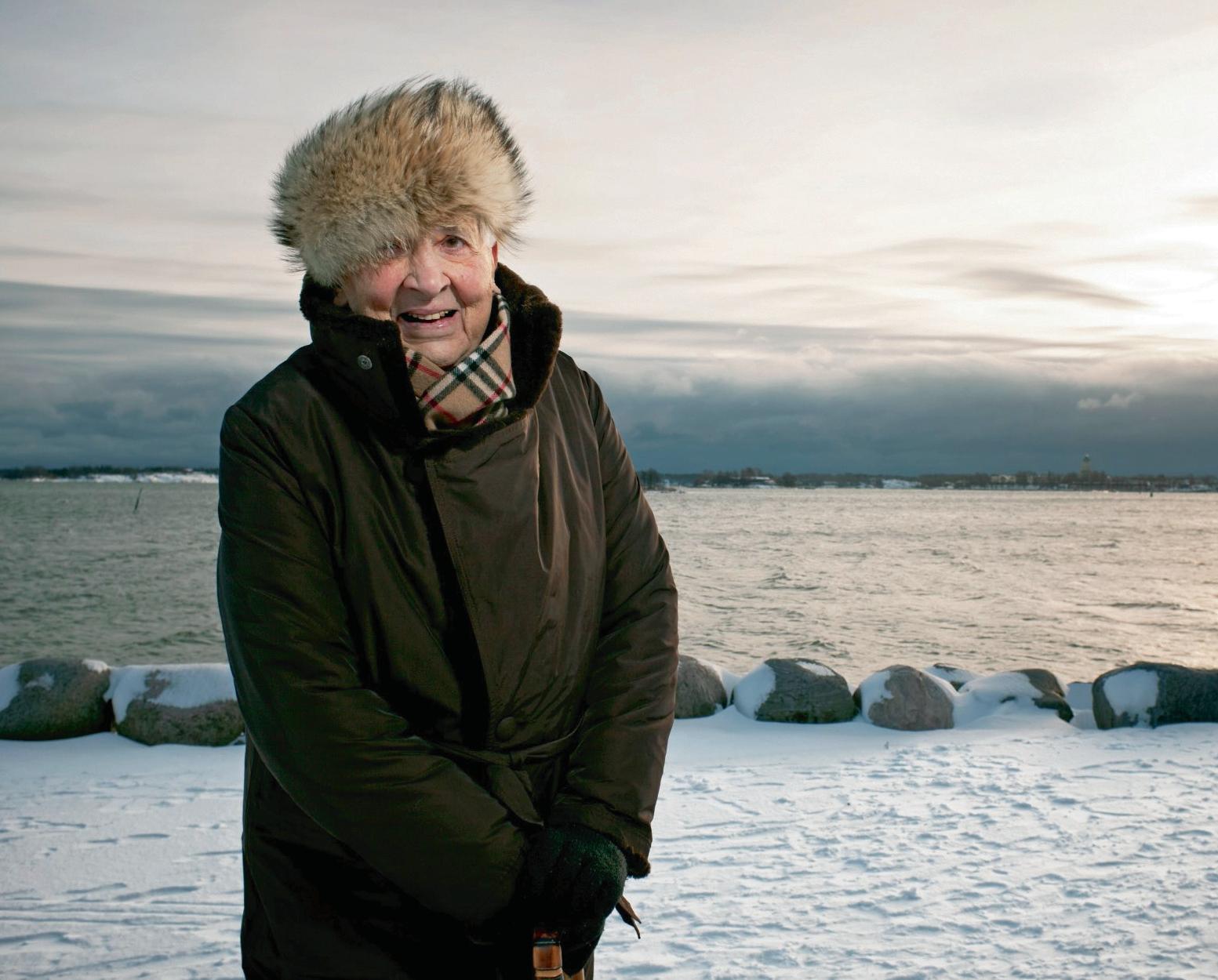 PHOTO BY SAKARI VIIKA
PHOTO BY SAKARI VIIKA
musicology at the University of Helsinki before composition studies at the Sibelius Academy. One of his first compositions — A Requiem in Our Time for brass and percussion — received international attention after winning the Thor Johnson Competition in Cincinnati in 1954, prompting none other than Jean Sibelius to recommend him for
a scholarship to Juilliard. Further studies in the US with Persichetti, Copland, and Sessions built upon a solid musical foundation and by the time Rautavaara graduated in 1957, he was poised to become a major figure in Finnish composition.
The rest of Rautavaara’s career continued on a similar trajectory. Successful and strikingly original works — including symphonies, operas, concertos, and chamber music — were supplemented by a lengthy teaching tenure at the
clevelandorchestra.com | 5
Einojuhani Rautavaara was one of the foremost Finnish composers after Sibelius, penning a wide array of works from symphonies and operas to chamber and vocal music.
Sibelius Academy (where he counted Esa-Pekka Salonen as one of his students). In 1985, he received the prestigious Finnish State Prize for Music. He passed away in 2016 at 87, having completed his final work — the Fantasia for violin and orchestra — the previous year.
Rautavaara’s early works employ a Stravinsky-esque neoclassical style before he veered into more experimental territory in the ’60s, becoming one of the first Finnish composers to use serial
Rautavaara (seen here at his home in 1969) was one of the first Finnish composers to use serialism in his music before adopting a neoromantic style.
techniques. But Rautavaara quickly found this approach to be a creative dead-end. In the late ’60s and early ’70s, he adopted a neoromantic style that synthesizes various musical approaches, with a bent towards accessibility through simple harmonies and modal melodies.
It is out of this creative phase that Cantus Arcticus arose. Commissioned in 1972 by Finland’s University of Oulu, this three-movement “Concerto for Birds and Orchestra” — as the composer subtitled it — combines the sounds of a traditional symphony orchestra with taped birdsongs Rautavaara himself recorded in northern Finland. The work

6 | 2023/2024 SEASON
THE MUSIC
is a natural outgrowth of the composer’s love for the rugged beauty of his homeland and a desire to foster a more “organic” approach to composition. (Rautavaara once stated, “[I] like to think that my compositions are rather like ‘English gardens,’ freely growing and organic, as opposed to those that are pruned to geometric precision and severity.”)
Even if one is unaware of Rautavaara’s “organic” approach, it can still be gleaned upon listening. In the first movement
of a shore lark, which Rautavaara called the “ghost bird.” This recording is split between two different audio channels, which creates an arresting call-andresponse effect. The violins soon enter with an ethereal chorale that is gradually joined by the rest of the orchestra before this — the shortest of the three movements — disappears almost as soon as it began.
Sounds of a flock of whooper swans herald the arrival of the final movement (“Swans Migrating”). A clarinet plays
[I] like to think that my compositions are rather like ‘English gardens,’ freely growing and organic, as opposed to those that are pruned to geometric precision and severity.
— Einojuhani Rautavaara
(“The Bog”), a pair of flutes pass a wispy line back and forth before a recording of marshland birds quietly emerges from the musical fog. (The opening performance instructions encourage the players to “Think of autumn and of Tchaikovsky.”) Other wind instruments begin to imitate the calls of various feathered fowl — in free, non-measured time — before the sun peeks through the mist and the rest of the orchestra introduces a gorgeously long-breathed melody. The recorded birdsong adds a fascinating sense of realism to this mysterious music, and sings harmoniously with the orchestral instruments.
The second movement (“Melancholy”) opens with a slowed-down recording
a rising and falling line that echoes the flutes’ from the first movement. More woodwinds enter the texture with similar figures, whipping up a cacophonous whirlwind. Horns and low strings introduce another broad, majestic melody — echoes of Sibelius are not far away here — as the tinkling of celesta and harp are layered on top. The whole ensemble crescendos to a glorious breaking point before fading away into nothing as the flock of swans flies into the distant beyond.
— Kevin McBrien
Kevin McBrien is The Cleveland Orchestra’s publications manager. He holds a PhD in musicology from UC Santa Barbara and has written program notes for the Aspen Music Festival and School, Seattle Symphony, and Philharmonic Society of Orange County.
clevelandorchestra.com | 7
BY
PHOTO
URPO ROUHIAINEN / WIKIMEDIA COMMONS
Stabat Mater
by Julia Perry
BORN : March 25, 1924, in Lexington, Kentucky
DIED: April 24, 1979, in Akron, Ohio
▶ COMPOSED: 1950–51
▶ WORLD PREMIERE: August 8, 1951, with the composer as soloist and Piero Bellugi conducting a student orchestra at Tanglewood
▶ This weekend’s performances mark the first presentations of Julia Perry’s Stabat Mater by The Cleveland Orchestra.
▶ ORCHESTRATION: strings and contralto
▶ DURATION: about 20 minutes
See page 16 for the sung texts and translations.
“AH, THEY’RE GRAND GIRLS, ” Dr. Abe Perry of Akron told the Cleveland Call & Post in 1945. “They’re grand! Never gave me a minute’s trouble and more’n that, they’ve really got talent.” And it’s easy to understand why he was so proud. Clara, Lucy, Julia, and Alice — or “Honey,” “Shoes,” “Johnny,” and “Snooky,” as he affectionately called them — were all highly accomplished musicians. Dr. Perry, a pianist-turned-physician who had accompanied the renowned tenor Roland Hayes early in his career, saw to their musical education and relished in their success.
Among the four daughters, the soprano Julia Perry stood out for her keen interest in composition. While a student at the Westminster Choir College in the mid-1940s, she wrote and arranged pieces for the school’s elite
42-voice ensemble, of which she was one of only three African American members. Her composition instructor, Henry Switten, was so impressed with her ability that he hired her to join his staff when he took over as head of the famed music department at Virginia’s Hampton Institute in 1948. There she taught orchestration, composition, and music theory while the choir frequently performed her works.
Perry had an irrepressible creative spirit that soon led her in new directions. She attended the Berkshire Music Center at Tanglewood on a composition scholarship in the summer of 1949 and then left Hampton to pursue further
8 | 2023/2024 SEASON
THE MUSIC
Ohio native Julia Perry moved to Florence, Italy, to find support for her music that was not available to her in the US. She composed her Stabat Mater before moving abroad.

clevelandorchestra.com | 9 PHOTO BY DAVID LEES / GETTY IMAGES
studies in conducting at Juilliard and voice at Curtis, all while developing a large catalog of original works. “Later I want to write an opera,” she said in a 1950 interview. “I believe that in order to do that a composer should know all phases of music — vocal, including choral, instrumental, and conducting. This fall I want to study ballet and dramatics.” She returned to Tanglewood in the summer of 1951 to study with Luigi Dallapiccola, an anti-fascist Italian modernist, and it was there that
to write music conveying its gripping internal drama. The “Inflammatus” section of Rossini’s Stabat Mater is still a perennial favorite.
Divided into 10 connected movements of two stanzas each and dedicated to her mother, Perry’s score is sparse, even stark in certain moments, but no less expressive than those of her predecessors. Likely with Dallapiccola’s encouragement, she infused it with jagged chromatic melodies, dissonant harmonies, and unusual rhythmic groupings — devices
Miss Perry seems to be a gifted and schooled composer from whom we shall be hearing more and more. I hope so.
— Virgil Thomson
her newest piece, Stabat Mater for contralto soloist and string orchestra, received its premiere.
The Stabat Mater text, a Catholic hymn dating from the 13th century, reflects on the suffering of the Virgin Mary as she weeps during the crucifixion of Jesus. The poem’s emotionally rich 20 stanzas move gradually inward as the narrator seeks to unite with Mary in her agony while pleading for her intervention with Christ on Judgment Day. With a simple rhyme scheme and a regular trochaic meter, it has inspired dozens of composers, from Lassus and Palestrina of the Renaissance to Rossini and Dvořák in the 19th century,
that would become characteristic of her mature musical language. In this context, they become vehicles for capturing the text’s wide emotional terrain.
A sinewy counterpoint culminating in a cello drone opens the piece and grants it an archaic quality that pervades to the end. The vocalist enters with the stoicism of an objective narrator, but this sense of distance dissolves rapidly when, accompanied by shimmering strings, she sings of the pain rending Mary’s soul, as if it had been pierced by a sword (“Cujus animam … pertransivit gladius”). With an increasingly simmering backdrop marked by sighing gestures in the upper strings, the piece reaches its first climax
10 | 2023/2024 SEASON THE MUSIC
when the text mentions Christ’s commendation of his spirit to heaven (“dum emisit spiritum”).
The fifth movement (“Eia mater fons amoris”) begins tenderly, with the sparse archaism of the opening returning in full force through the end of the sixth (“Sancta Mater”). The musical character changes dramatically at the start of the seventh movement (“Fac me verum tecum”) as the music conveys the narrator’s intense psychological transformations — at one moment demanding to share in Christ’s pain while dreading it at another. This section builds slowly over three movements with exquisitely pictorial writing in the strings until the vocalist reaches the word “Inflammatus” in a moment worthy of any operatic climax. The piece closes with a stoicism reminiscent of the opening that sublimates into a vision of paradise.
Perry’s Stabat Mater quickly became her signature work. The proceeds from a performance in Akron in October 1951 enabled her to travel overseas for further
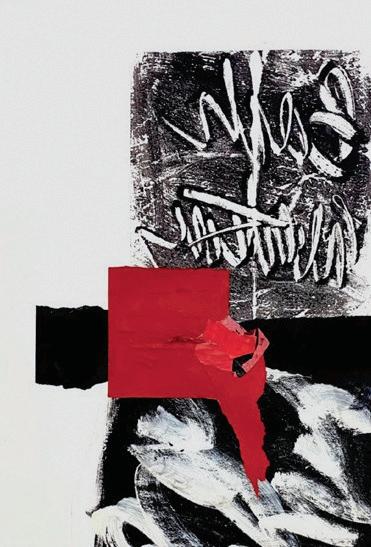

study with Dallapiccola in Italy, where she staged it frequently (and served as soloist), much to audience delight. After a 1954 performance in New York, the great critic Virgil Thomson wrote, “Miss Perry seems to be a gifted and schooled composer from whom we shall be hearing more and more. I hope so.” By 1960, the piece had even been performed and recorded in Japan.
Marking the 100th anniversary of Perry’s birth on March 25, The Cleveland Orchestra’s performances return us to where it all began. “These are girls whose names you’ll be reading tomorrow,” the Call & Post observed in 1945. “You’ll be able to say, ‘Why I read something about them when they were just getting started.’ It won’t be long either because the Perrys are fast coming into their own!”
— D ouglas W. Shadle
Douglas W. Shadle is an associate professor of musicology at Vanderbilt University and the author of two highly regarded books: Orchestrating the Nation and Antonín Dvořák’s New World Symphony. A leading authority on composer Florence B. Price, he sits on the board of the International Florence Price Festival.
THE BALDWIN WALLACE 23/24 BACH FESTIVAL
ACRONYM Plays Bach | Fri, Apr 12 at 7pm
The Baroque Band ACRONYM performs Bach and a selection of wild instrumental music of seventeenth-century Germany which inspired him.
1724/2024 | Sat, Apr 13 at 7pm
BWV: Cleveland’s Bach Choir performs the motets and cantatas of J. S. Bach, and a newly commissioned work by BW Composer-in-Residence Dr. Clint Needham and Dr. Dirk Garner, artistic director and conductor.
St. John Passion | Sun, Apr 14 at 2pm
BWV: Cleveland’s Bach Choir soloists, the BW Bach Choir, BW Festival Orchestra with ACRONYM, Dr. Dirk Garner, artistic director and conductor.
bw.edu/tickets | Presented by the Kulas Foundation
clevelandorchestra.com | 11
Symphony No. 2 in D major, Op. 43
by Jean Sibelius
BORN : December 8, 1865, in Hämeenlinna, Finland
DIED: September 20, 1957, in Järvenpää, Finland
▶ COMPOSED: 1901–02
▶ WORLD PREMIERE: March 8, 1902, in Helsinki, with the composer conducting the Helsinki Philharmonic
▶ CLEVELAND ORCHESTRA PREMIERE: November 24, 1927, led by Music Director Nikolai Sokoloff
▶ ORCHESTRATION: 2 flutes, 2 oboes, 2 clarinets, 2 bassoons, 4 horns, 3 trumpets, 3 trombones, tuba, timpani, and strings
▶ DURATION: about 45 minutes
MANY OF US think of Sibelius primarily as a symphonist, yet he did not embark on his first symphony until he was well into his thirties. Like Richard Strauss, who was only a year older, he had dabbled unsuccessfully in opera but was best known for a series of tone poems — in Sibelius’s case, tone poems with Finnish subjects. Strauss soon renewed his efforts in opera, to great success. Sibelius, instead, built a solid and lasting achievement in his seven symphonies, the last dating from 1924.
We could equally compare Sibelius to Beethoven, who also waited until he was 30 before producing the first of his immortal nine symphonies. (Sibelius’s own much-talked-about Eighth Symphony, so keenly anticipated and so lavishly discussed by music-lovers and journal-
ists, never appeared — or was perhaps purposefully destroyed by the composer — even though he lived a full 30 years after apparently retiring from composition.)
In fact, comparing Sibelius to Beethoven was a recurrent element of early 20th-century music criticism, in which the English critic Cecil Gray roundly declared Sibelius to be “the greatest master of the symphony since the death of Beethoven.”
While any symphonist in the last 200 years has known that his or her work would always be compared to Beethoven, Sibelius’s early symphonic thinking was more about contemporary models —
12 | 2023/2024 SEASON
THE MUSIC
1068165_Cleveland Orchestra_Week 17.single_sw
Jean Sibelius (photographed here around 1899) found great success in colorful, tightly-constructed symphonies and tone poems.
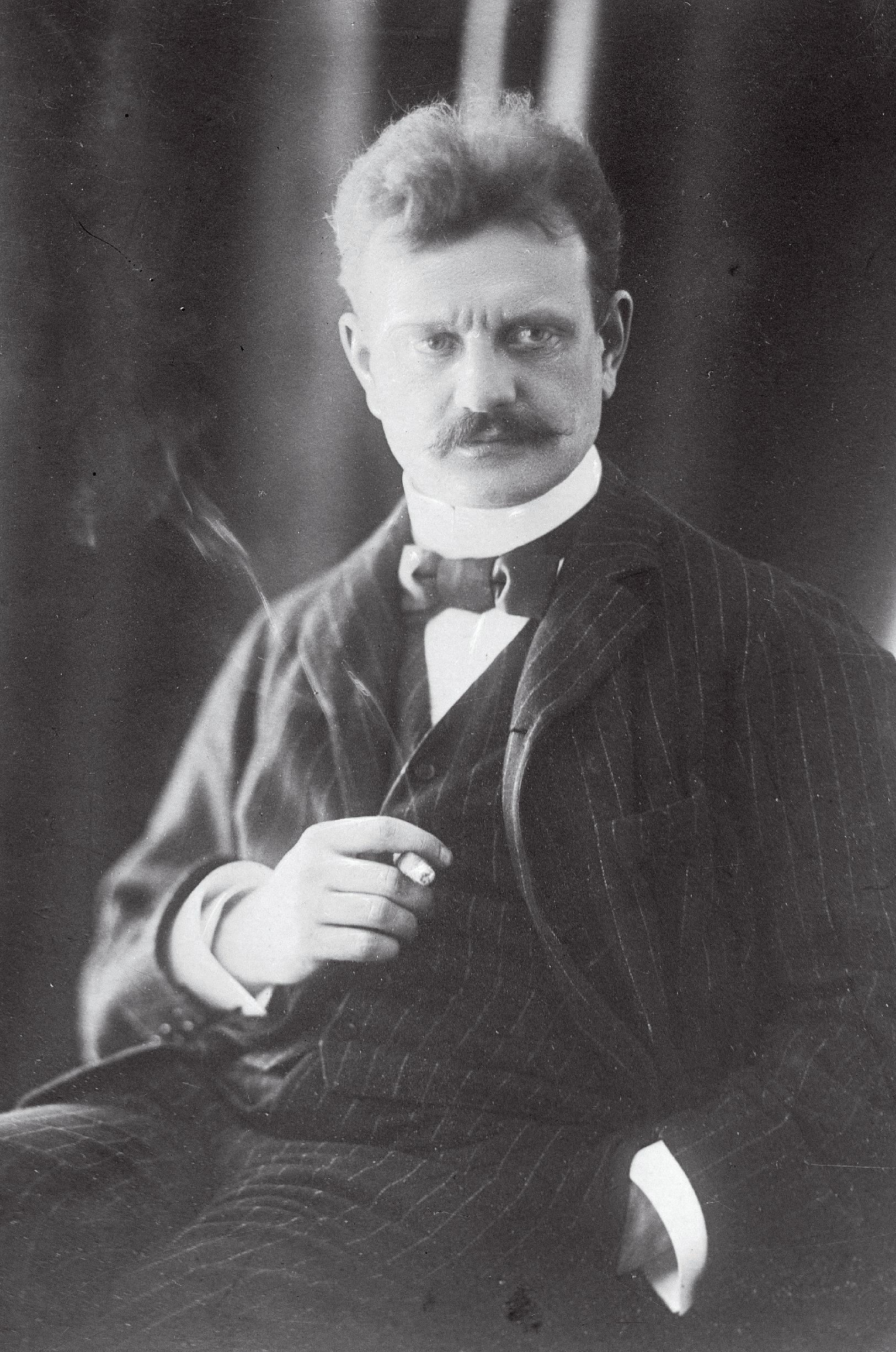
clevelandorchestra.com | 13 PHOTO BY IVAR RAFAEL HELANDER / WIKIMEDIA COMMONS
Borodin, Tchaikovsky, or Bruckner, whose works impressed him deeply. During a stay in Berlin in 1898, he also heard Berlioz’s Symphonie fantastique and noted in his sketchbook: “O holy inspiration! O holy goddess!”
Sibelius’s First Symphony appeared in 1899, almost simultaneously with Finlandia and following his Lemminkäinen Suite. Suddenly, he was known across Europe. He was invited to conduct his music in Stockholm, Paris, Heidelberg, and Berlin. He acquired a publisher in Leipzig and met Dvořák in Prague. He
quality in the opening movement and a sense of triumphant well-being in the finale. This music may very well reflect the optimistic state of the composer’s mind and his affairs at that time.
Returning to Finland, he completed the symphony at his mother-in-law’s country retreat and then gave the first performance at Helsinki University in March 1902. It was an immediate success, played soon after in Hamburg, Chicago, Boston, and beyond — and it has remained a familiar and popular concert work ever since.
The [Second Symphony] encompasses many moods, but there is a sunlit quality in the opening movement and a sense of triumphant well-being in the finale.
was awarded a Finnish state pension for life and was thus able to resign his teaching post at Helsinki University to devote his energies to composing and promoting his music through concerts and conducting.
There were to be dark times ahead — when poor health, alcoholism and depression, money problems, and anxiety about his standing in contemporary music dogged him — but for the first few years of the 20th century Sibelius was riding high.
In 1901, he travelled south and took a villa in Rapallo, Italy, and there began his Second Symphony. The music encompasses many moods, but there is a sunlit
The first movement has been much acclaimed for its subtle handling of conventional symphonic form. The themes are clear — fragmentary at first, but soon melding into an organic shape. Particularly characteristic is the theme that begins on a long-held note, like so many Sibelius themes, finally moving into a flourish and a falling fifth. There are phrases when the woodwinds find themselves wrapped up in trills, there are solid passages for the brass alone, and constant running, fidgety figures in the strings. Sibelius shapes all this with masterly control, and the close of the movement has the same quiet serenity as the opening.
14 | 2023/2024 SEASON
THE MUSIC
KEVIN MCBRIEN
The slow movement is a fine example of Sibelius’s skill with tempo. Andante, ma rubato at the head of the movement is little indication of the diversity of ideas that will come. The most surprising passage is the wandering tread of double basses and cellos at the beginning, which turns out to be the accompaniment to a melancholy tune on two bassoons. The tempo quickens and a sense of agitation seizes the music. After some stern opinions from the brass, a divinely beautiful entry of the strings restores calm, for a brief period at least. The movement is long, varied in mood, but always tightly controlled and balanced.
A speedy scherzo third movement follows, alternating with a sunny middle section when the oboe gives us another of those themes that start on a single note, many times repeated, and finally rounded off. Its second appearance leads directly without a break into the finale fourth movement, perhaps in homage to Beethoven’s Fifth, where a triumphant finale similarly emerges from its preceding scherzo.
While alternating tempos play a major part in the first two movements of this symphony, here it is the steady broad pulse that creates the tension. There is also a competing juxtaposition between the simple opening theme in the major and the second subject in the minor key (first played by the woodwinds over a surging figure in the violas and cellos). The unsophisticated contour of these two main themes has drawn criticism even from Sibelius’s

admirers, but that is surely the secret to the movement’s overwhelming effect. For when the minor theme returns, it builds and builds towards the inevitable, unforgettable moment when the major key breaks out like sunshine bursting through the clouds. Sibelius’s later symphonies are filled with a sense of mystery, but here it is impossible not to hear the grand uplifting feeling that a great performance of this work conveys.
— Hugh Macdonald
Hugh Macdonald is Avis H. Blewett Professor Emeritus of Music at Washington University in St. Louis. He has written books on Beethoven, Berlioz, Bizet, and Scriabin, as well as Music in 1853: The Biography of a Year
clevelandorchestra.com | 15 PHOTO BY
The Finnish Cultural Garden (dedicated in 1958 as part of the Cleveland Cultural Gardens) features a monument to Sibelius, which includes a musical quote from his tone poem Finlandia.
Stabat Mater
by Julia Perry
Based on Stabat Mater by Jacopone da Todi
Translation
by
Julia Perry
Used by arrangement with Southern Music Publishing Co., Inc.
I.
Stabat Mater Dolorosa juxta crucem lacrymosa dum pendebat Filius; cujus animam gementem contristatam et dolentem pertransivit gladius.
II.
O quam tristis et afflicta, fuit illa benedicta
Mater Unigeniti;
quae moerebat et dolebat, et tremebat cum videbat nati poenas inclyti.
III.
Quis est homo qui non fleret Christi Matrem si videret in tanto supplicio?
Quis non posset contristari piam Matrem contemplari, dolentem cum Filio?
IV.
Pro peccatis suae gentis vidit Jesum in tormentis et flagellis subditum;
vidit Jesum dolcem natum morientem desolatum dum emisit spiritum.
I.
Stood the Mother sadly weeping, near the cross her presence keeping, whereon hung the Only Son;
through whose spirit sympathizing Him she saw in sorrow and compassion through whom passed the cruel sword.
II.
O how mournful and afflicted was this favored and most blessed Mother of the Only Son;
through His dying, suff’ring, grieving, as she trembled scarce perceiving pains of the Illustrious One.
III.
Who is the man who could not weep saw he there the Mother of Christ in great supplication?
Who could not give consolation to the Mother contemplating, mournful with her Child?
IV.
For the sinning of His people, saw her Jesus in great torment beaten with the scourger’s rod; saw her Sweet One dying yes, forsaken, crying yield His spirit up to God.
16 | 2023/2024 SEASON THE SUNG TEXT




V.
Eia Mater fons amoris me sentire vim doloris fac ut tecum lugeum; fac ut ardeat cor meum in amando Christum Deum ut sibi complaceam.
VI.
Sancta Mater istud agas crucifixi fige plagas corde meo valide.
Tui nati vulnerati jam dignati pro me pati poenas mecum divide.
V.
Tender Mother, fount of love, let me feel thy sadness, that with thee my tears shall flow; make my heart so steadfast for Him, O Mother make it burn with love for thy Son, that I may be pleasing unto Him.
VI.
Holy Mother, this be granted: let His wounds be firmly planted in my heart forevermore. See the Savior wounded, depths unbounded for me suffered; pangs of grief me divide.
clevelandorchestra.com | 17 CONTINUED ON NEXT PAGE ▶ ▶ ▶
VII.
Fac me verum tecum flere, crucifixus condolere donec ego vixero: juxta crucem tecum stare te libenter sociare in planctu desidero.
VIII.
Virgo virginum praeclara mihi jam non sis amara fac me tecum plangere.
Fac ut portem Christe mortem passionis ejus sortem et plagas recolere.
IX.
Fac me plagas vulnerari cruce hac inebriari, ob amorem Filii.
Inflammatus et accensus per te Virgo sim defensus in die judicii.
X.
Fac me cruce custodiri morte Christe praemuniri confoveria gratia; quando corpus morietur fac ut animae donetur Paradisi gloria.
VII.
Make me weep with thee in union at the crucifix, there condoling; I shall help to bear the blame: near the cross with you standing, sharing freely agony with Him forever: this I desire.
VIII.
Virgin, of all virgins dearest, be not bitter when thou hearest; make me with thee to weep.
Make me bear the death of Christ, His passion sharing shamefully while renewing pains in me.
IX.
Wound for wound be there created by the cross intoxicated, for love of thy Only Son.
Here inflam’d I stand in the fire of love. Through thee, Virgin protect me on the Judgment Day.
X.
Of Thy cross, Lord, make me keeper; of Thy cross, Lord, defender with a grateful heart to Thee; when the body death has risen, grant that to the soul be given Glories bright of Paradise.
THE SUNG TEXT CONTINUED ▶ ▶ ▶ 18 | 2023/2024 SEASON
Josefina Maldonado — who debuted at Severance in 2022 with John Adams’s El Niño — returns to sing Perry’s Stabat Mater
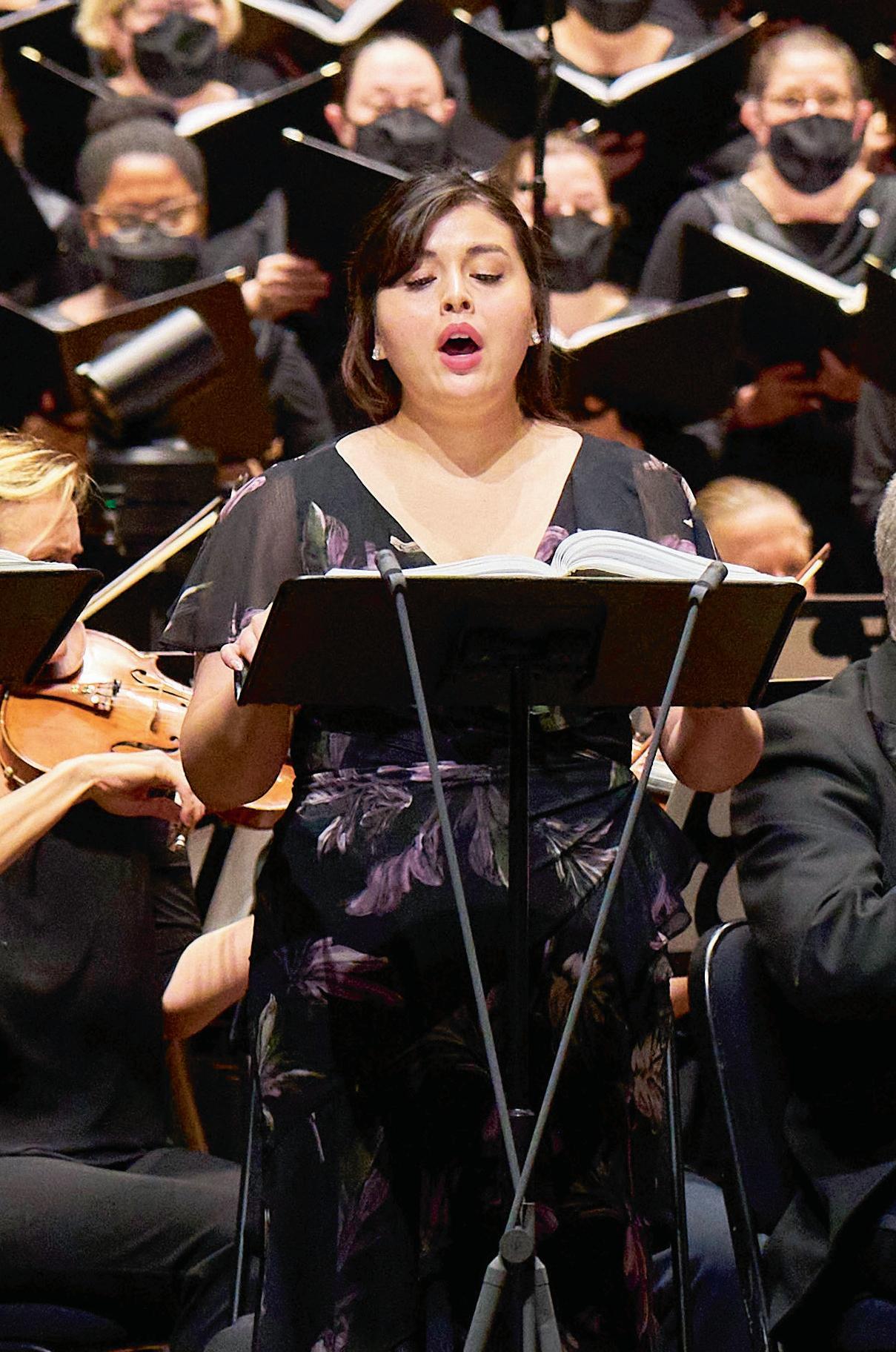
clevelandorchestra.com | 19 PHOTO BY
ROGER MASTROIANNI
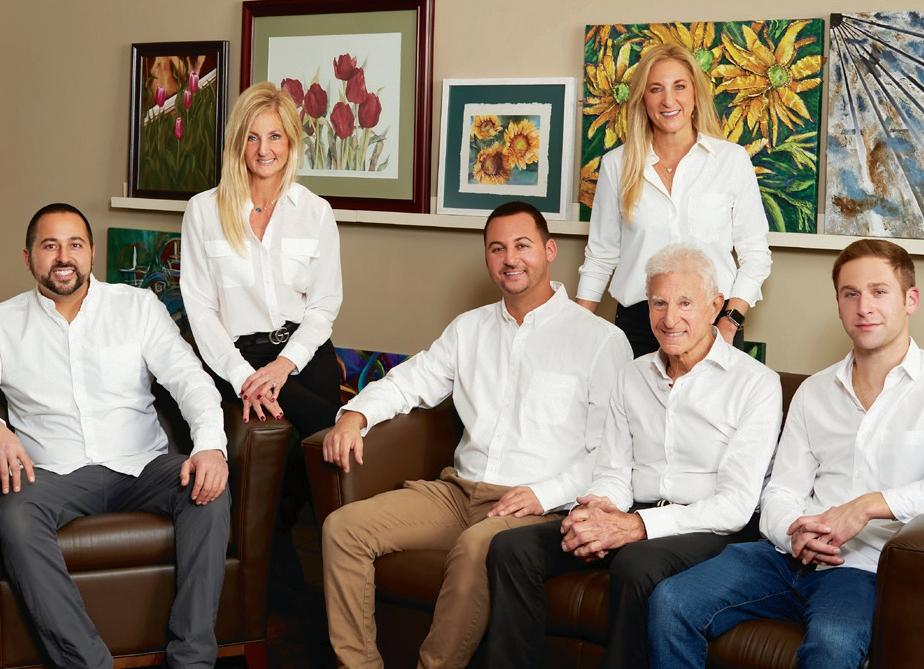




34300 Solon Road | Solon, OH | 440-248-2424 | 800-260-2949 One block south of Rt. 422 & SOM Center Road 10-8 M/Th | 10-5:30 Tu/W/F/Sa | www.sedlakinteriors.com Complimentary Delivery and Set-Up Within 60 Miles. CELEBRATING LJI builds con dence in every customer and ensures quality repairs and superior customer service. Our commitment is to achieve and retain customer loyalty for life! 27100 Chagrin Blvd. at I-271 Orange Village (216)364-7100 1640 Lee Rd. at Mayfield Cleveland Hts. (216) 932-7100 TWO LOCATIONS Customer Con dence – Priority One™ ljicollisioncenter.com


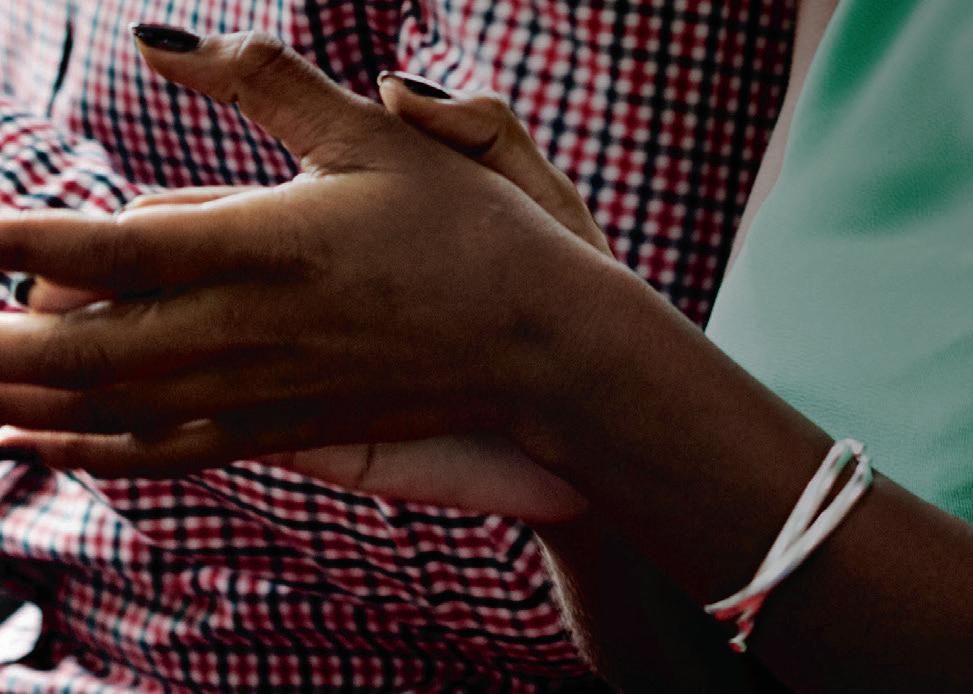
State and federal dollars through the Ohio Arts Council supported your arts experience today.


?
ARTSINOHIO.COM @OHIOARTSCOUNCIL | #ARTSOHIO | OAC.OHIO.GOV
WHERE
WILL THE ARTS TAKE YOU NEXT
VISIT

THE CONDUCTOR
Dalia Stasevska
Dalia Stasevska’s charismatic and dynamic musicianship has established her as a conductor of exceptional versatility. Chief conductor of the Lahti Symphony Orchestra and artistic director to the International Sibelius Festival, Stasevska is also principal guest conductor of BBC Symphony Orchestra. She has made several appearances at the BBC Proms including the First Night of the Proms in 2023.
In the 2023–24 season, Stasevska conducts The Cleveland Orchestra, Danish National Symphony Orchestra, hr-Sinfonieorchester, Cincinnati Symphony Orchestra, and Seattle Symphony. Other recent engagements have included the New York and Los Angeles philharmonics, the Chicago Symphony Orchestra, and Toronto Symphony Orchestra, among others.
In spring 2024, Stasevska and the BBC Symphony Orchestra collaborate on a Total Immersion project focussing on Missy Mazzoli. Her debut album for Platoon, Dalia’s Mixtape, will feature 10 tracks of some of the freshest sounds in contemporary music and will be released one month at a time starting in March 2024.
A passionate opera conductor, 2023 saw Stasevska’s highly successful debut at the Glyndebourne Opera Festival with Britten’s A Midsummer Night’s Dream
Other productions include Don Giovanni with Kungliga Opera Stockholm, The Cunning Little Vixen with Finnish National Opera, and Sebastian Fagerlund’s
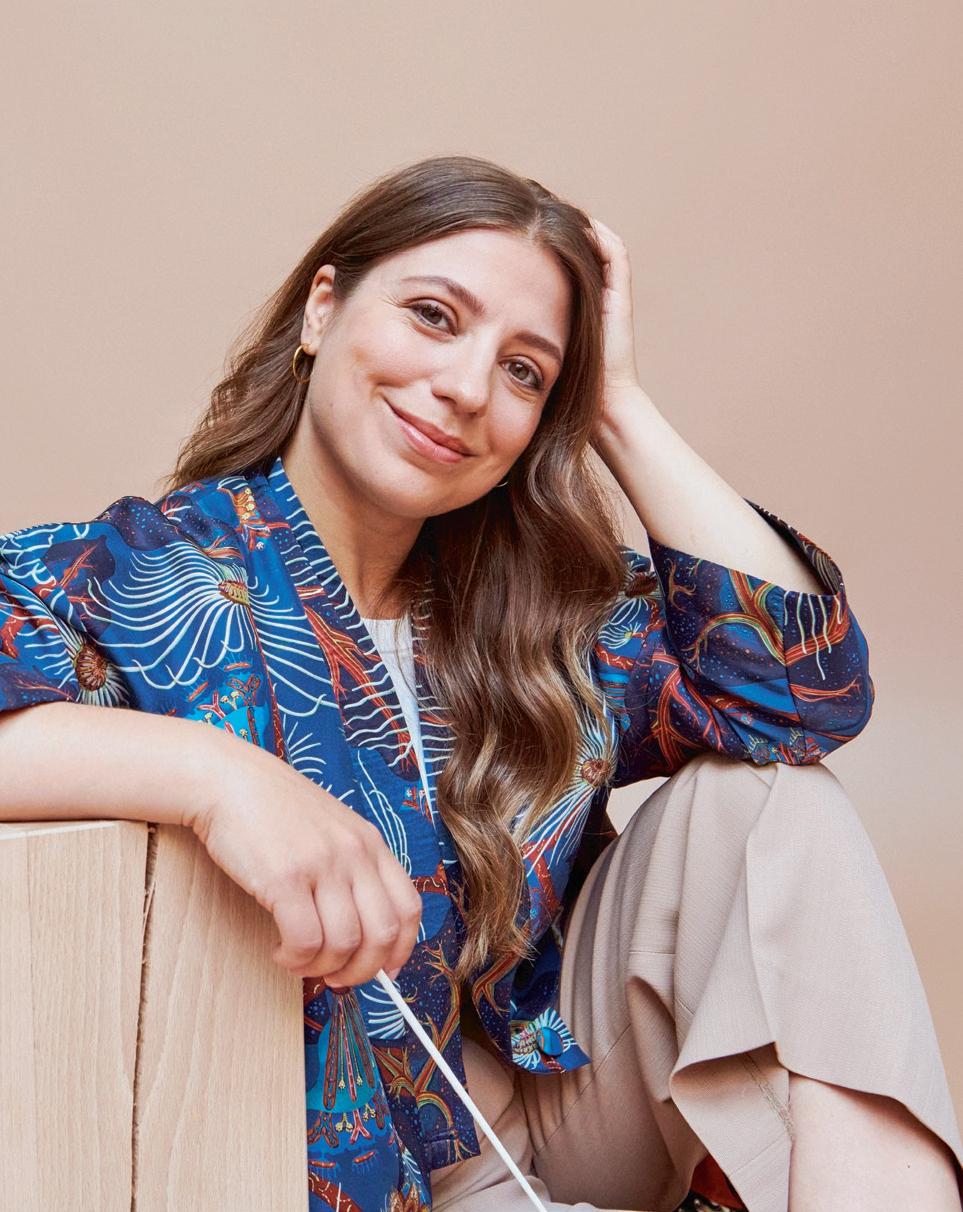
Höstsonaten at the 2018 Baltic Sea Festival. Stasevska attended the Tampere Conservatoire followed by studies at the Sibelius Academy. In December 2018, she conducted the Royal Stockholm Philharmonic Orchestra at the Nobel Prize Ceremony in Stockholm. She was awarded the Royal Philharmonic Society’s Conductor Award in 2020, the Alfred Kordelin Prize in 2022, and BBC Music Magazine’s Personality of the Year award in 2023. Stasevska was bestowed the Order of Princess Olga of the III degree by President Volodymyr Zelenskyy in October 2020 for her significant personal contribution to the development of international cooperation, strengthening the prestige of Ukraine internationally, and popularization of its historical and cultural heritage. Since February 2022, she has actively been supporting Ukraine by raising donations to buy supplies and, on a number of occasions, delivering them herself.
clevelandorchestra.com | 23
PHOTO BY VEIKKO KÄHKÖNEN


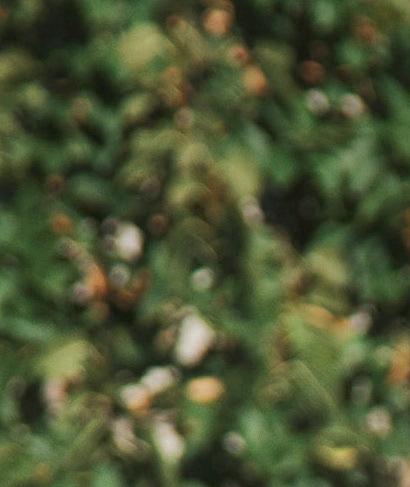



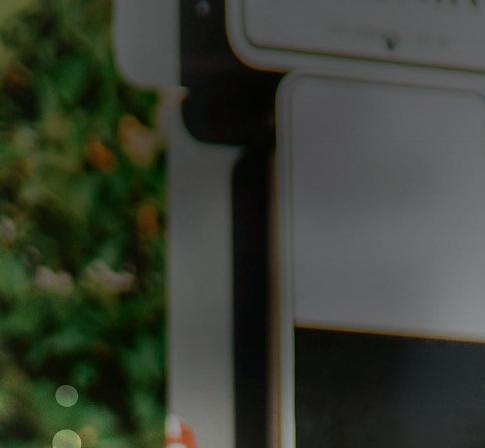














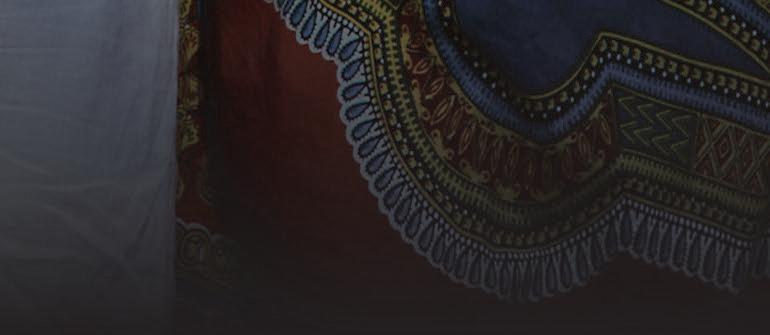



















IF YOU’RE LOOKING TO E P L O R E ON L I NE Ohio City Inc. OHIO CITY STREET FESTIVAL KATIE DIKE ClevelandArtsEvents .com connects you to the region’s vibrant arts and culture scene. With just a few clicks, discover hundreds of events made possible in part with public funding from Cuyahoga Arts & Culture.
Josefina Maldonado
mezzo-soprano
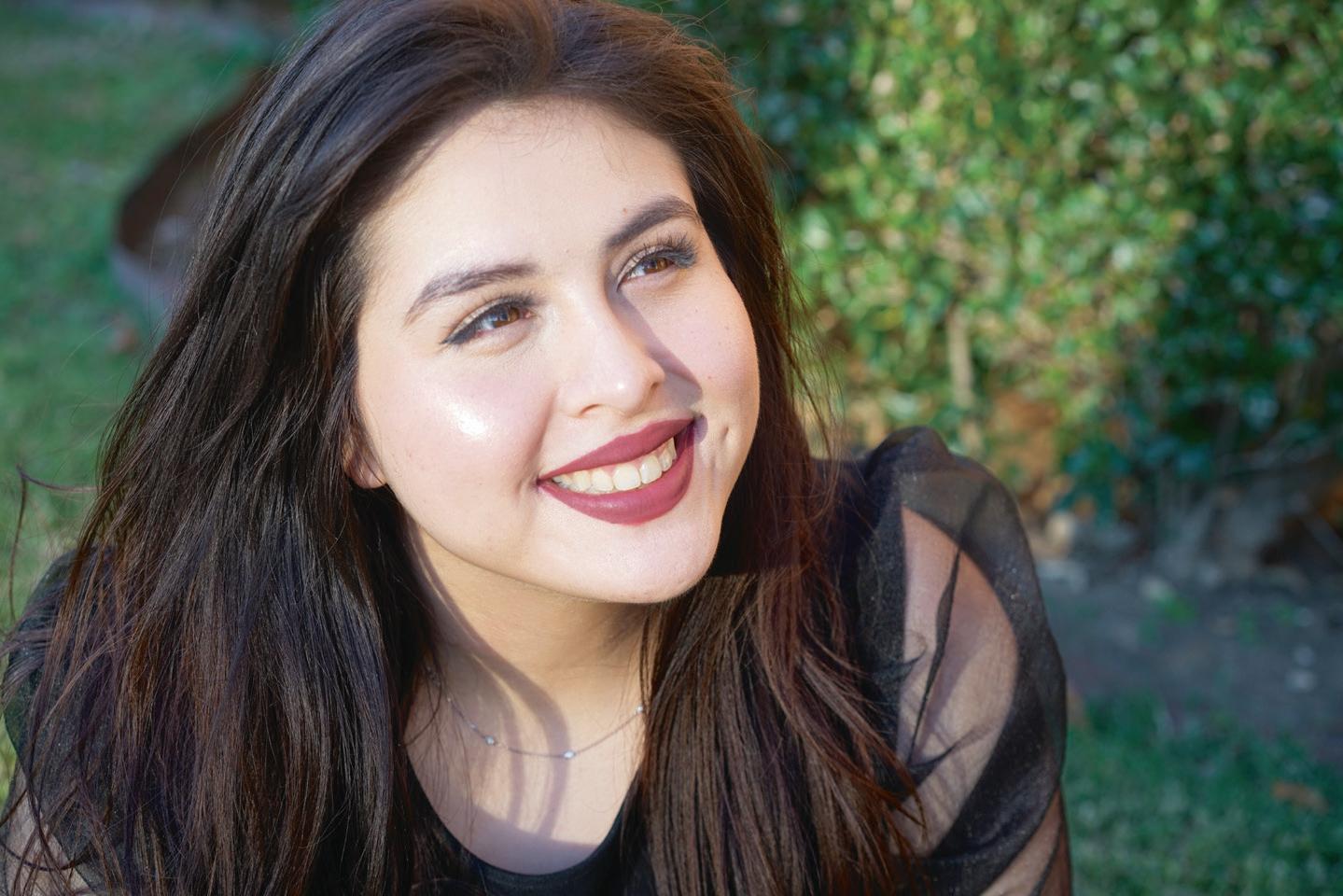
Dallas-born mezzo-soprano Josefina Maldonado has been critically acclaimed by Texas Classical Review and Theater Jones as “vocally superb” with a “remarkably rich timbre.” Maldonado was a young artist with the Dallas Opera Outreach Program in 2019, singing multiple roles. That year she also made her European debut as a principal artist in the modern-day premieres of two 17th-century serenatas by Johann Heinrich Schmelzer — Le veglie ossequiose and Die sieben Alter stimmen zusammen — for the Olomouc Baroque Festival in the Czech Republic.
In May 2022 she made her debut with the Cincinnati Symphony Orchestra at the Cincinnati May Festival in
John Adams’s El Niño, conducted by the composer, followed by her debut with The Cleveland Orchestra in the same role in November 2022. She now returns to The Cleveland Orchestra to sing Julia Perry’s Stabat Mater, conducted by Dalia Stasevska.
Maldonado holds a Bachelor of Music degree from the University of North Texas where she was a frequently featured soloist with the UNT Symphony Orchestra. Her roles with UNT Opera included Dorabella in Così fan tutte, Ruggiero in Handel’s Alcina, Cherubino in Mozart’s Le nozze di Figaro, Siébel in Faust, and Mother Marie in Poulenc’s Dialogues of the Carmelites.
clevelandorchestra.com | 25 PHOTO COURTESY OF
ALICIA MALDONADO THE ARTIST
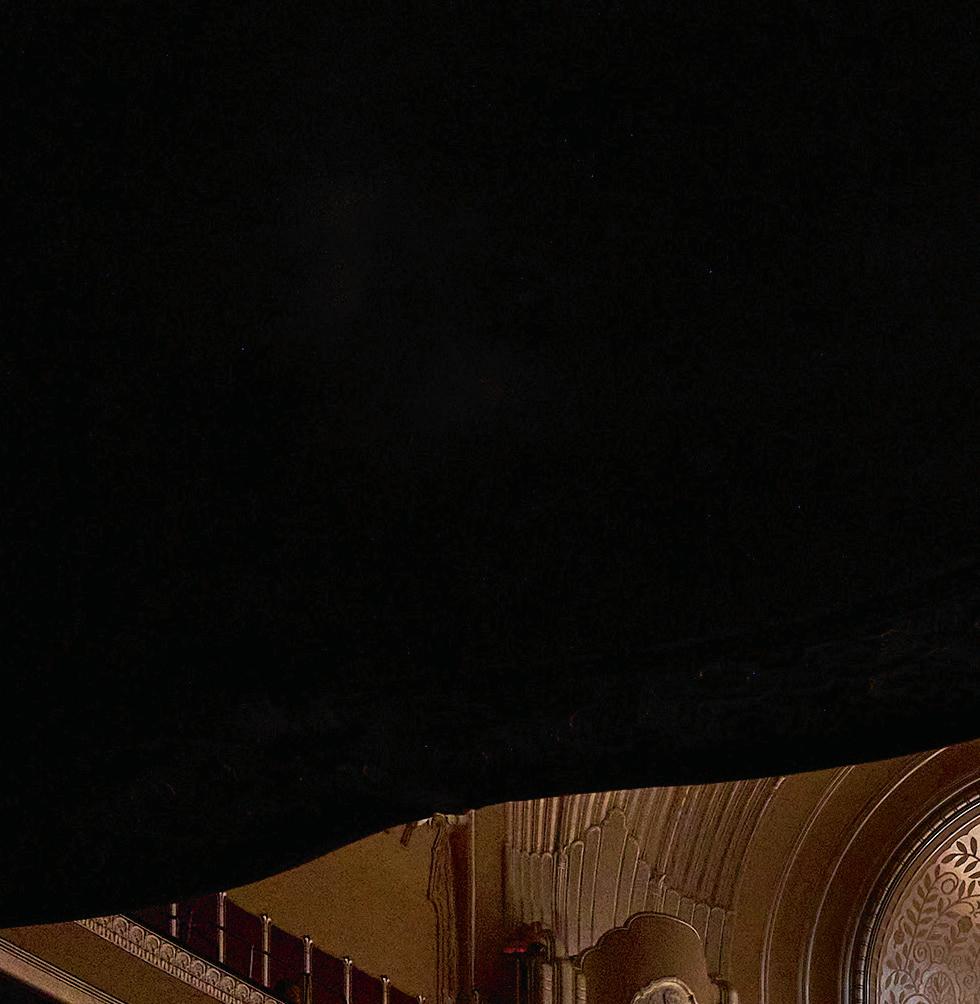
Expect the Extraordinary
Whether escaping the bustle of daily life with a beloved classic or discovering new worlds with the less familiar, come share the extraordinary this season with The Cleveland Orchestra .
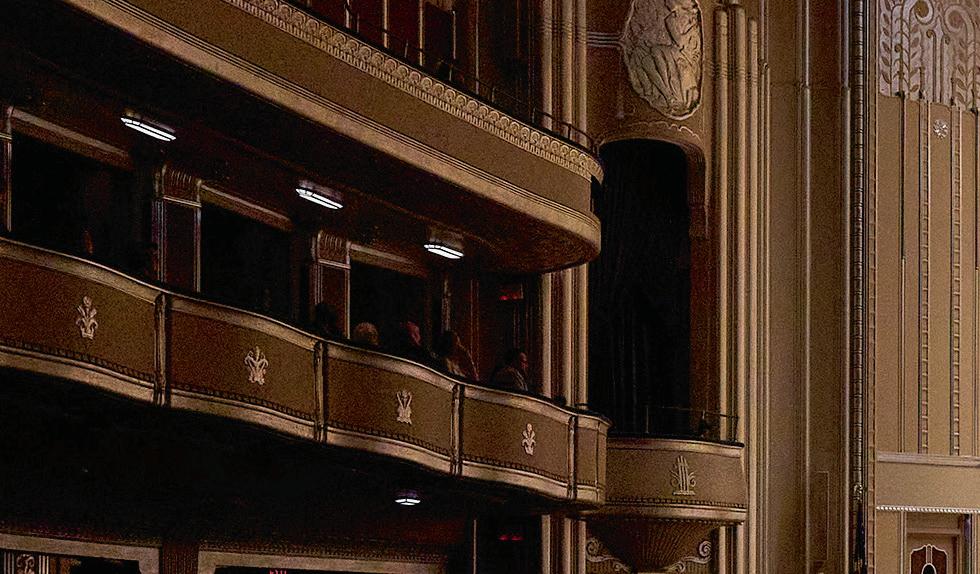



Subscriptions on sale now for the 2024–25 Season
When you subscribe, you provide vital support to your Cleveland Orchestra and enjoy these exclusive benefits:
•The best seats at the best prices
• Free and easy ticket exchanges
• Purchase your parking in advance
• 20% off additional ticket purchases
• 10% off at The Cleveland Orchestra Store
• Money back guarantee
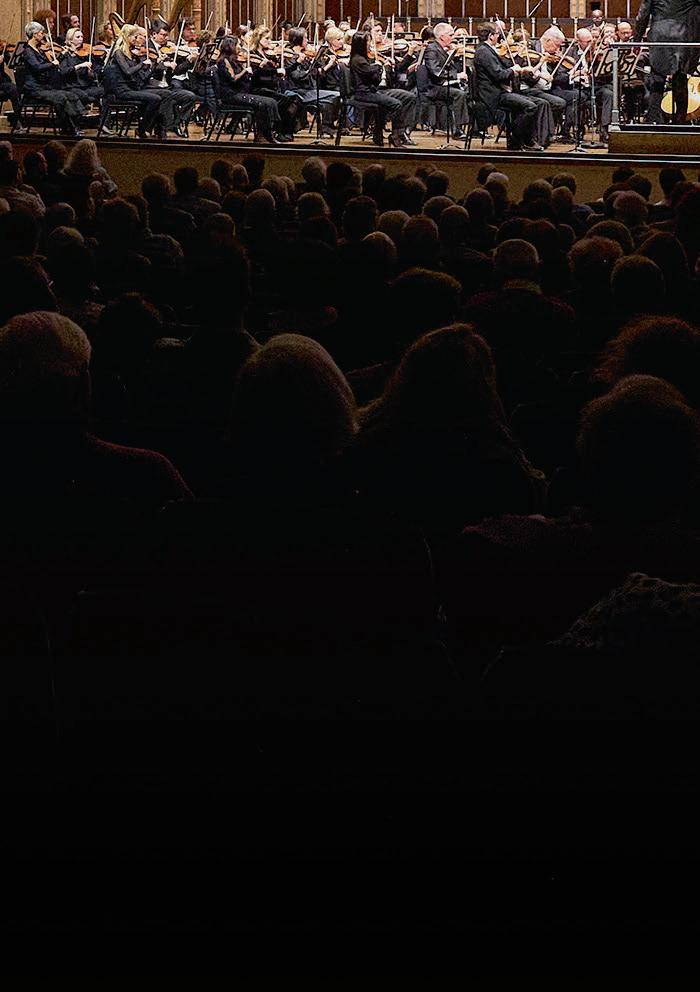
ABOUT THE CLEVELAND ORCHESTRA
NOW IN ITS SECOND CENTURY
, The Cleveland Orchestra, under the leadership of Music Director Franz Welser-Möst since 2002, is one of the most sought-after performing ensembles in the world. Year after year, the ensemble exemplifies extraordinary artistic excellence, creative programming, and community engagement. The New York Times has called Cleveland “the best in America” for its virtuosity, elegance of sound, variety of color, and chamber-like musical cohesion.
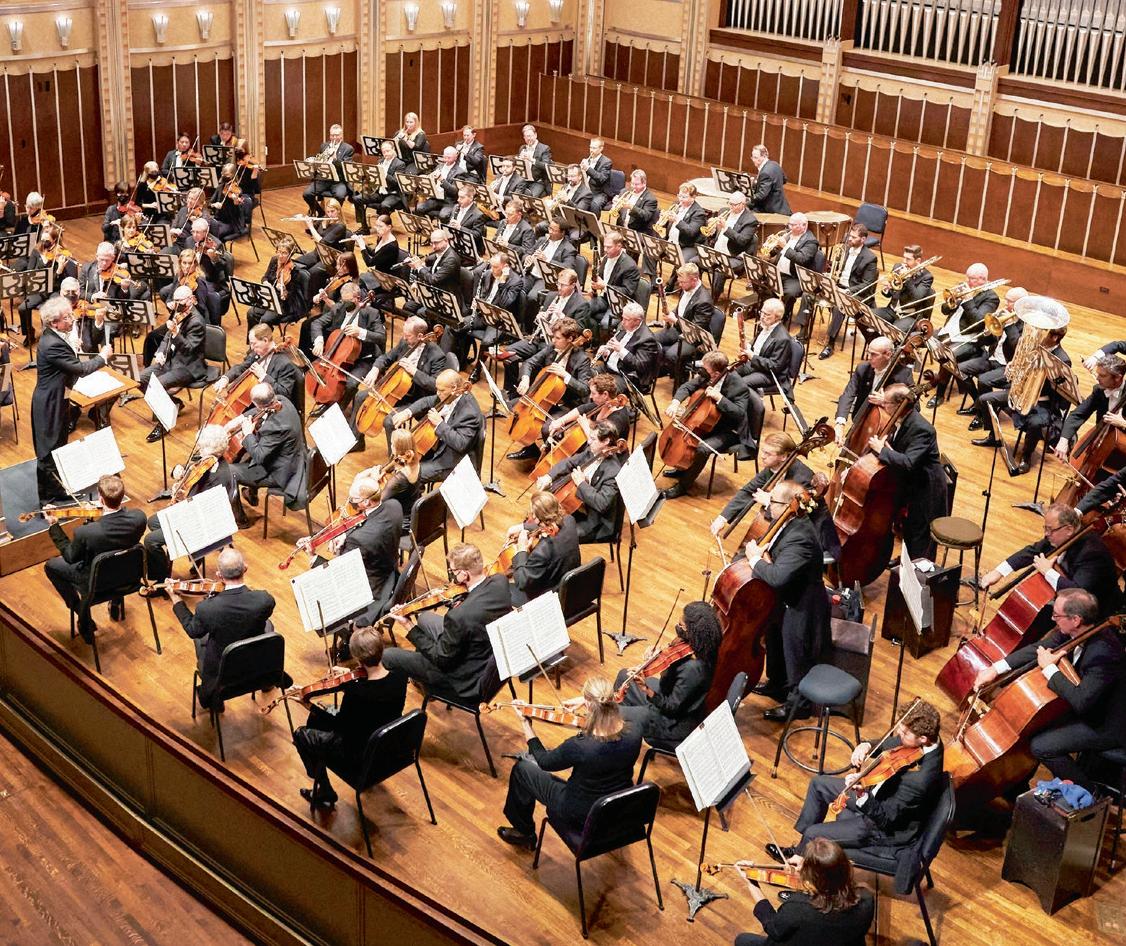
Founded by Adella Prentiss Hughes, the Orchestra performed its inaugural concert in December 1918. By the middle of the century, decades of growth and sustained support had turned it into one of the most admired globally.
The past decade has seen an increasing number of young people attending concerts, bringing fresh attention to The Cleveland Orchestra’s legendary sound and committed programming. More recently, the Orchestra launched several bold digital projects, including the streaming platform Adella, the podcast On a Personal Note, and its own recording label, a new chapter in the Orchestra’s long and distinguished recording and broadcast history. Together, they have captured the Orchestra’s unique artistry and the musical achievements of the Welser-Möst and Cleveland Orchestra partnership.
The 2023 – 24 season marks Franz Welser-Möst’s 22nd year as music director, a period in which The Cleveland Orchestra earned unprecedented acclaim around the world, including a series of residencies at the Musikverein in Vienna, the first of its kind by an American orchestra, and a number of acclaimed opera presentations.
Since 1918, seven music directors — Nikolai Sokoloff, Artur Rodziński, Erich Leinsdorf, George Szell, Lorin Maazel, Christoph von Dohnányi, and Franz Welser-Möst — have guided and shaped the ensemble’s growth and sound. Through concerts at home and on tour, broadcasts, and a catalog of acclaimed recordings, The Cleveland Orchestra is heard today by a growing group of fans around the world.


clevelandorchestra.com | 27
@ClevelandOrchestra @clevelandorchestra @CleveOrchestra @Cleveorch PHOTO BY ROGER
MASTROIANNI
THE CLEVELAND ORCHESTRA
Franz Welser-Möst, Music Director
KELVIN SMITH FAMILY CHAIR
FIRST VIOLINS
Jung-Min Amy Lee
ASSOCIATE
CONCERTMASTER
Gretchen D. and Ward Smith Chair
Jessica Lee
ASSISTANT CONCERTMASTER
Clara G. and George P. Bickford Chair
Stephen Tavani
ASSISTANT CONCERTMASTER
Dr. Ronald H. Krasney Chair
Wei-Fang Gu
Drs. Paul M. and Renate H.
Duchesneau Chair
Kim Gomez
Elizabeth and Leslie Kondorossy Chair
Chul-In Park
Harriet T. and David L. Simon Chair
Miho Hashizume
Theodore Rautenberg Chair
Jeanne Preucil Rose
Larry J.B. and Barbara S. Robinson Chair
Alicia Koelz
Oswald and Phyllis Lerner
Gilroy Chair
Yu Yuan
Patty and John Collinson Chair
Isabel Trautwein
Trevor and Jennie Jones Chair
Katherine Bormann
Analisé Denise Kukelhan
Gladys B. Goetz Chair
Zhan Shu
Youngji Kim
Genevieve Smelser
SECOND VIOLINS
Stephen Rose*
Alfred M. and Clara T. Rankin Chair
Jason Yu2
James and Donna Reid Chair
Eli Matthews1
Patricia M. Kozerefski and Richard J. Bogomolny Chair
Sonja Braaten Molloy
Carolyn Gadiel Warner
Elayna Duitman
Ioana Missits
Jeffrey Zehngut
Sae Shiragami
Kathleen Collins
Beth Woodside
Emma Shook
Dr. Jeanette Grasselli Brown and Dr. Glenn R. Brown Chair
Yun-Ting Lee
Jiah Chung Chapdelaine
Liyuan Xie
VIOLAS
Wesley Collins*
Chaillé H. and Richard B.
Tullis Chair
Stanley Konopka2
Mark Jackobs
Jean Wall Bennett Chair
Lisa Boyko
Richard and Nancy
Sneed Chair
Richard Waugh
Lembi Veskimets
The Morgan Sisters Chair
Eliesha Nelson
Anthony and Diane
Wynshaw-Boris Chair
Joanna Patterson Zakany
William Bender
Gareth Zehngut
CELLOS
Mark Kosower*
Louis D. Beaumont Chair
Richard Weiss1
The GAR Foundation Chair
Charles Bernard2
Helen Weil Ross Chair
Bryan Dumm
Muriel and Noah Butkin Chair
Tanya Ell
Thomas J. and Judith Fay
Gruber Chair
Ralph Curry
Brian Thornton
William P. Blair III Chair
David Alan Harrell
Martha Baldwin
Dane Johansen
Paul Kushious
BASSES
Maximilian Dimoff*
Clarence T. Reinberger Chair
Derek Zadinsky2
Charles Paul1
Mary E. and F. Joseph Callahan Chair
Mark Atherton
Thomas Sperl
Henry Peyrebrune
Charles Barr Memorial Chair
Charles Carleton
Scott Dixon
HARP
Trina Struble*
Alice Chalifoux Chair
FLUTES
Joshua Smith*
Elizabeth M. and William C. Treuhaft Chair
Saeran St. Christopher
Jessica Sindell2
Austin B. and Ellen W. Chinn Chair
Mary Kay Fink
PICCOLO
Mary Kay Fink
Anne M. and M. Roger Clapp Chair
OBOES
Frank Rosenwein*
Edith S. Taplin Chair
Corbin Stair
Sharon and Yoash Wiener Chair
Jeffrey Rathbun2
Everett D. and Eugenia S. McCurdy Chair
Robert Walters
ENGLISH HORN
Robert Walters
Samuel C. and Bernette K. Jaffe Chair
CLARINETS
Afendi Yusuf*
Robert Marcellus Chair
Robert Woolfrey
Victoire G. and Alfred M. Rankin, Jr. Chair
Daniel McKelway2
Robert R. and Vilma L. Kohn Chair
Amy Zoloto
E-FLAT CLARINET
Daniel McKelway
Stanley L. and Eloise M.
Morgan Chair
BASS CLARINET
Amy Zoloto
Myrna and James Spira Chair
BASSOONS
John Clouser*
Louise Harkness Ingalls Chair
Gareth Thomas
Barrick Stees2
Sandra L. Haslinger Chair
Jonathan Sherwin
CONTRABASSOON
Jonathan Sherwin
HORNS
Nathaniel Silberschlag*
George Szell Memorial Chair
Michael Mayhew§
Knight Foundation Chair
Jesse McCormick
Robert B. Benyo Chair
Hans Clebsch
Richard King
Meghan Guegold Hege
28 | 2023/2024 SEASON
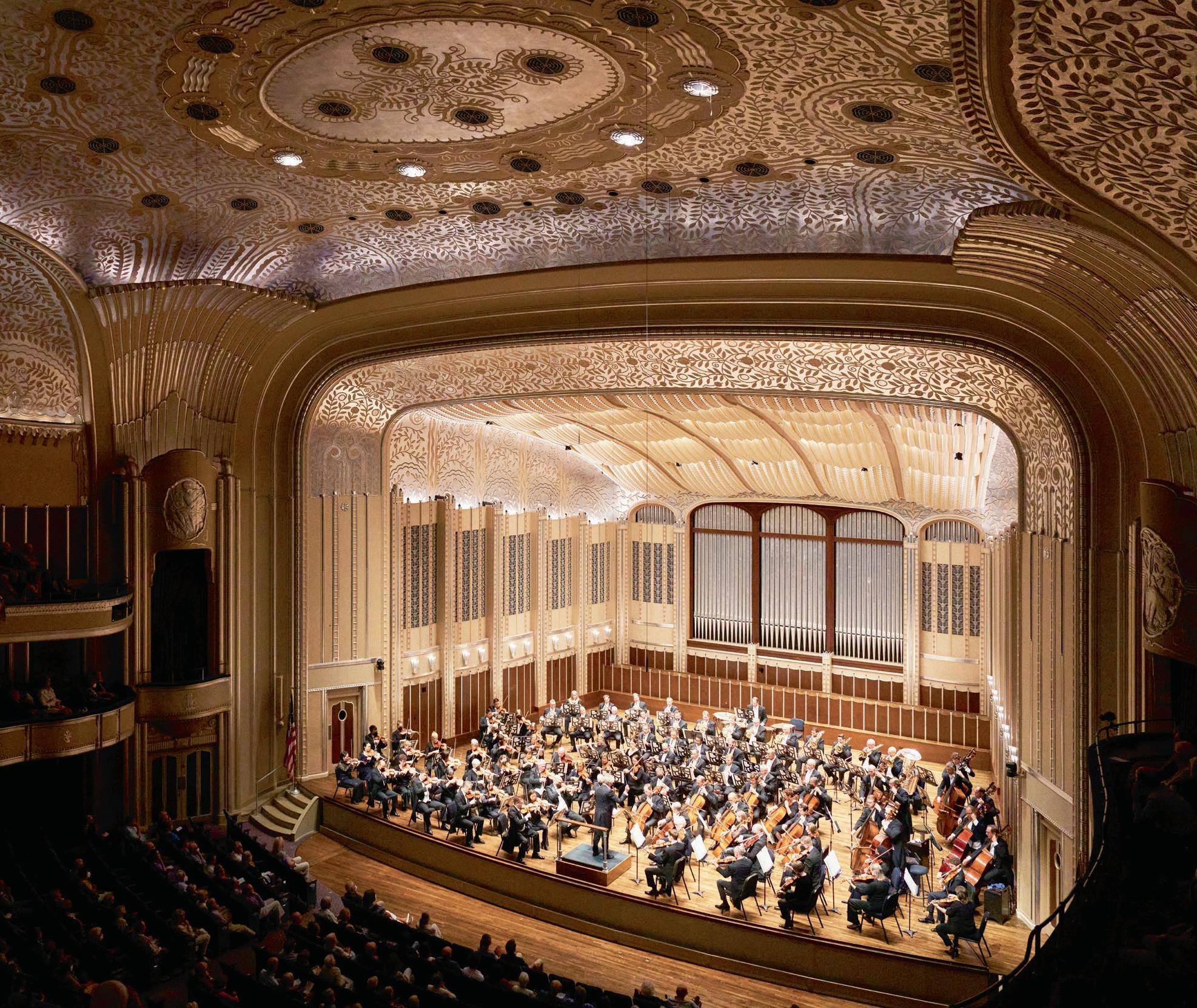
TRUMPETS
Michael Sachs*
Robert and Eunice Podis
Weiskopf Chair
Jack Sutte
Lyle Steelman2
James P. and Dolores D. Storer Chair
Michael Miller
CORNETS
Michael Sachs*
Mary Elizabeth and G. Robert Klein Chair
Michael Miller
TROMBONES
Brian Wendel*
Gilbert W. and Louise I.
Humphrey Chair
Richard Stout
Alexander and Marianna C. McAfee Chair
Shachar Israel2
BASS TROMBONE
Luke Sieve
EUPHONIUM & BASS TRUMPET
Richard Stout
TUBA
Yasuhito Sugiyama*
Nathalie C. Spence and Nathalie S. Boswell Chair
TIMPANI
vacant
PERCUSSION
Marc Damoulakis*
Margaret Allen Ireland Chair
Thomas Sherwood
Tanner Tanyeri
KEYBOARD INSTRUMENTS
Carolyn Gadiel Warner
Marjory and Marc L. Swartzbaugh Chair
clevelandorchestra.com
LIBRARIANS
Michael Ferraguto
Joe and Marlene Toot Chair
Donald Miller
ENDOWED CHAIRS CURRENTLY UNOCCUPIED
Elizabeth Ring and William Gwinn Mather Chair
Blossom-Lee Chair
Virginia M. Linsdseth, PhD, Chair
Paul and Lucille Jones Chair
Charles M. and Janet G.
Kimball Chair
Sunshine Chair
Otto G. and Corinne T. Voss Chair
Mr. and Mrs. Richard K.
Smucker Chair
Rudolf Serkin Chair
CONDUCTORS
Christoph von Dohnányi
MUSIC DIRECTOR LAUREATE
Daniel Reith
ASSISTANT CONDUCTOR
Sidney and Doris Dworkin Chair
Lisa Wong
DIRECTOR OF CHORUSES
Frances P. and Chester C. Bolton Chair
* Principal
§ Associate Principal
1 First Assistant Principal
2 Assistant Principal
This roster lists full-time members of The Cleveland Orchestra. The number and seating of musicians onstage varies depending on the piece being performed. Seating within the string sections rotates on a periodic basis.
| 29 PHOTO BY
ROGER MASTROIANNI


“We make a living by what we get, but we make a life by what we give.”
— Winston Churchill
When you create your legacy with The Cleveland Orchestra, you make world-class music a way of life in Northeast Ohio for generations to come.
Learn how you can use your assets to plan a thoughtful gift, and make a lasting connection to the music you love.
Katie Shames, JD 216-456-8400 legacy@clevelandorchestra.com
THE 2023/2024 SEASON CALENDAR
SPRING
MAR 21 – 23
SIBELIUS’S SECOND SYMPHONY
Dalia Stasevska, conductor
Josefina Maldonado, mezzo-soprano
RAUTAVAARA Cantus Arcticus
PERRY Stabat Mater
SIBELIUS Symphony No. 2
Pre-concert lecture by Kevin McBrien
APR 4 & 6
CITY NOIR
John Adams, conductor
James McVinnie, organ
Timothy McAllister, saxophone
GABRIELLA SMITH Breathing Forests
DEBUSSY Prelude to the Afternoon of a Faun
JOHN ADAMS City Noir
Pre-concert lecture by Eric Charnofsky
APR 11 – 13
ELGAR’S CELLO CONCERTO
Klaus Mäkelä, conductor
Sol Gabetta, cello
Thomas Hampson, baritone *
The Cleveland Orchestra Chorus *
JIMMY LÓPEZ BELLIDO Perú negro
ELGAR Cello Concerto
WALTON Belshazzar’s Feast *
Pre-concert lecture by James Wilding
APR 14
RECITAL Schumann & Brahms
Evgeny Kissin, piano
Matthias Goerne, baritone
R. SCHUMANN Dichterliebe
BRAHMS Four Ballades, Op. 10
BRAHMS Selected Songs
APR 18 – 20
YUJA WANG PLAYS RAVEL & STRAVINSKY
Klaus Mäkelä, conductor
Yuja Wang, piano
RAVEL Concerto for the Left Hand STRAVINSKY Concerto for Piano and Wind Instruments
STRAVINSKY The Rite of Spring
Pre-concert lecture by Caroline Oltmanns
APR 26 – 28
RACHMANINOFF’S SECOND PIANO CONCERTO
Lahav Shani, conductor
Beatrice Rana, piano
UNSUK CHIN subito con forza
RACHMANINOFF Piano Concerto No. 2
BARTÓK Concerto for Orchestra
Pre-concert lecture by James O’Leary
Pre-concert lectures are held in Reinberger Chamber Hall one hour prior to the performance.
MAY 2 – 4
LANG LANG PLAYS SAINT-SAËNS
Franz Welser-Möst, conductor
Lang Lang, piano *
SAINT-SAËNS Piano Concerto No. 2 *
BERLIOZ Symphonie fantastique
Pre-concert lecture by Caroline Oltmanns
MAY 16, 18, 24 & 26
MOZART’S MAGIC FLUTE
Franz Welser-Möst, conductor
Nikolaus Habjan, director
Julian Prégardien, tenor
Ludwig Mittelhammer, baritone
Christina Landshamer, soprano
The Cleveland Orchestra Chorus
MOZART The Magic Flute
Staged production sung in German with projected supertitles
MAY 23 & 25
MOZART’S GRAN PARTITA
Franz Welser-Möst, conductor
Leila Josefowicz, violin
Trina Struble, harp
WAGNER Prelude and Liebestod from Tristan und Isolde
JÜRI REINVERE Concerto for Violin and Harp
MOZART Serenade No. 10, “Gran Partita”
Pre-concert lecture by Michael Strasser
* Not performed on the Friday matinee concert

tickets & more information
clevelandorchestra.com For
visit:
CLEVELANDORCHESTRA.COM/REWARDS | 216-231-1111 THE PLACE FOR FANS OF THE CLEVELAND ORCHESTRA EARN POINTS • Attend concerts • Watch videos • Answer quizzes • Give feedback GET REWARDS • Seat upgrades & exclusive content • FREE season of Adella with 3000 Rewards points • VIP experiences & more JOIN NOW Log in to your account at my.clevelandorchestra.com and click “Rewards”
YOUR VISIT
HEALTH & SAFETY
The Cleveland Orchestra is committed to creating a comfortable, enjoyable, and safe environment for all guests at Severance Music Center. While mask and COVID-19 vaccination are recommended they are not required. Protocols are reviewed regularly with the assistance of our Cleveland Clinic partners; for up-to-date information, visit: clevelandorchestra. com/attend/health-safety
LATE SEATING
As a courtesy to the audience members and musicians in the hall, late-arriving patrons are asked to wait quietly until the first convenient break in the program. These seating breaks are at the discretion of the House Manager in consultation with the performing artists.
PAGERS, CELL PHONES & WRISTWATCH ALARMS
As a courtesy to others, please silence all devices prior to the start of the concert.
PHOTOGRAPHY, VIDEOGRAPHY & RECORDING
Audio recording, photography, and videography are prohibited during performances at Severance. Photographs can only be taken when the performance is not in progress.
HEARING AIDS & OTHER HEALTH-ASSISTIVE DEVICES
For the comfort of those around you, please reduce the volume on hearing aids and other devices that may produce a noise that would detract from the program. For Infrared Assistive-Listening Devices, please see the House Manager or Head Usher for more details.
IN THE EVENT OF AN EMERGENCY
Contact an usher or a member of house staff if you require medical assistance. Emergency exits are clearly marked throughout the building. Ushers and house staff will provide instructions in the event of an emergency.
AGE RESTRICTIONS
Regardless of age, each person must have a ticket and be able to sit quietly in a seat throughout the performance. Classical Season subscription concerts are not recommended for children under the age of 8. However, there are several age-appropriate series designed specifically for children and youth, including Music Explorers (for 3 to 6 years old) and Family Concerts (for ages 7 and older).
The Cleveland Orchestra is grateful to the following organizations for their ongoing generous support of The Cleveland Orchestra: the State of Ohio and Ohio Arts Council and to the residents of Cuyahoga County through Cuyahoga Arts and Culture.
Cleveland Orchestra performances are broadcast as part of regular programming on ideastream/WCLV Classical 90.3 FM, Saturdays at 8 PM and Sundays at 4 PM.
The Cleveland Orchestra is proud of its long-term partnership with Kent State University, made possible in part through generous funding from the State of Ohio.
The Cleveland Orchestra is proud to have its home, Severance Music Center, located on the campus of Case Western Reserve University, with whom it has a long history of collaboration and partnership.
© 2024 The Cleveland Orchestra and
Association
Program books for Cleveland Orchestra concerts are produced by The Cleveland Orchestra and are distributed free to attending audience members. EDITORIAL
Kevin
Elizabeth
32 | 2023/2024 SEASON
the Musical Arts
DESIGN
McBrien, Publications Manager kmcbrien@clevelandorchestra.com
Eddins
Eddinsdesign eddinsdesign@gmail.com ADVERTISING Live Publishing Company, 216-721-1800 clevelandorchestra.com Download today for instant, secure, and paperless access to your concert tickets. For more information and direct links to download, visit clevelandorchestra.com/ticketwallet or scan the code with your smartphone camera to download the app for iPhone or Android. Available for iOS and Android on Google Play and at the Apple App Store. FREE MOBILE APP TICKET WALLET
,

“We
PHOTO CREDITS XXXX 1068165_Cleveland Orchestra_Week 17.single_sw clevelandorchestra.com | iii As a Judson at Home member, you’ll have access to an engaging community, cultural programs, wellness activities and an array of dining venues. Most of all, you have all the services and amenities of a retirement community at your fingertips while living in your own home. (216)791-2436 judsonsmartliving.org Become a Member Today! Membership is Music to Our Ears! Read more about Max and Tony’s experience at judsonsmartliving.org/blog.
Bunker and Tony Bianchi / Bratenahl
Max
are paving a path for our next chapter by establishing connections now. We can keep enjoying our wonderful skyline views and musical activities, knowing our plan is in place.”
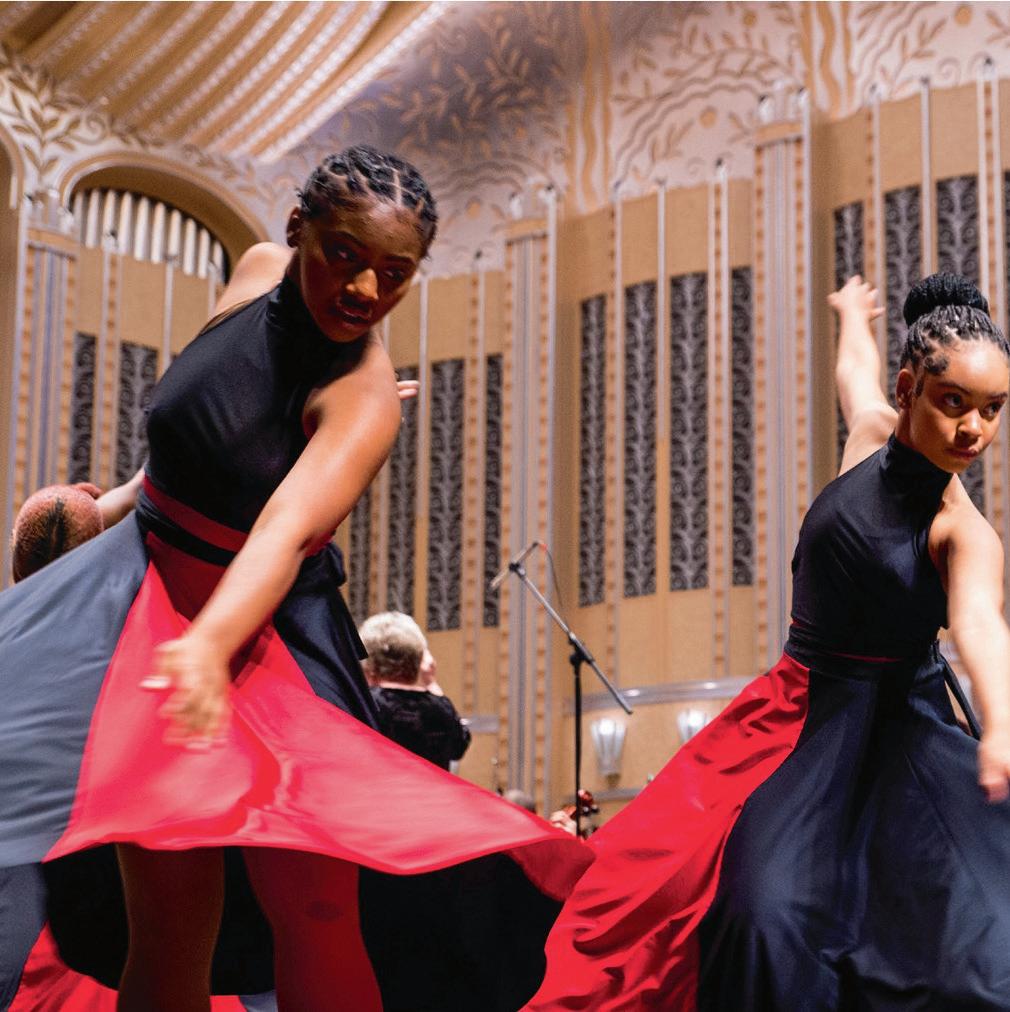

SETTING THE STAGE
for Success


We believe that all Cleveland youth should have access to high-quality arts education. Through the generosity of our donors, we have invested more than $12.6 million since 2016 to scale up neighborhood-based programs that serve thousands of youth year-round in music, dance, theater, photography, literary arts and curatorial mastery. That’s setting the stage for success. Find your passion, and partner with the Cleveland Foundation to make your greatest charitable impact.
(877) 554-5054
www.ClevelandFoundation.org/Success

Creative Arts Dance Academy
Tri-C











 PHOTO BY SAKARI VIIKA
PHOTO BY SAKARI VIIKA



































































